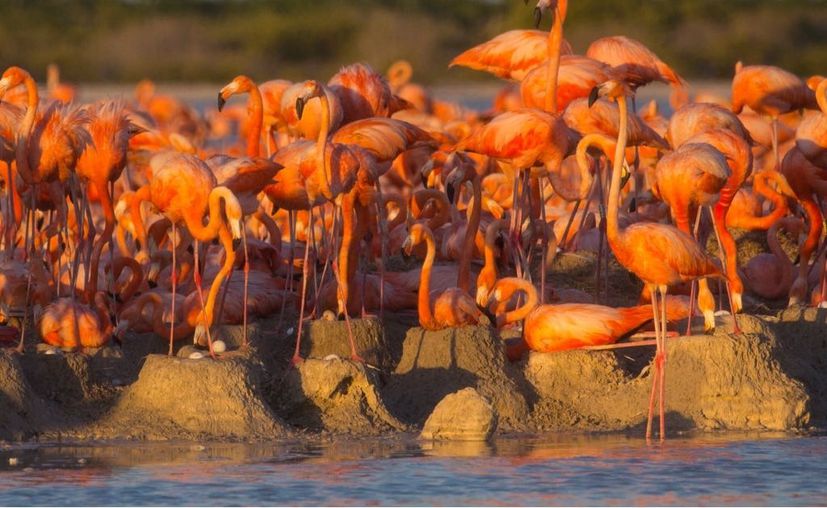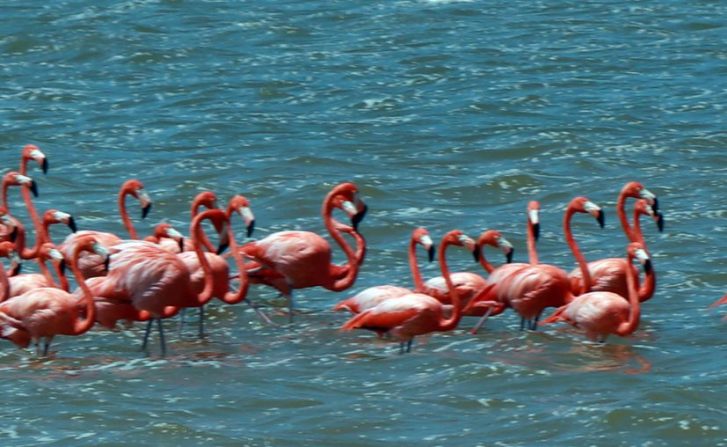Climate change, pollution from agrochemicals, heavy metals, and hydrocarbons, as well as changes in salinity and other factors such as the presence of massive tourism in the Ría Lagartos Biosphere Reserve, are causing flamingos to migrate to less polluted areas for their survival and reproduction.
On World Flamingo Day, commemorated today, environmental biologist José Cruz Hoil Rajón highlighted several factors that are causing this species to seek quieter places to nest, away from their natural habitat. He commented that they have been reproducing in San Crisanto since last season. The biologist reported that due to pollution and human presence in the natural area, pink flamingos have been disturbed and have begun to move to other sites.

In the Ría Lagartos Biosphere Reserve, species that are vital to the ecosystem stand out among the local fauna, such as the Caribbean flamingo (Phoenicopterus ruber ruber), whose distribution in Mexico is restricted to the northern portion of the Yucatan Peninsula. The nesting colonies are located in a small portion to the east of the Reserve. Despite having considerable populations in other parts of the Caribbean region, such as the Florida Peninsula and the Bahamas, it is considered under special protection.
The Reserve is limited by 90 vertices of the polygon with an area of 60,347.82 hectares, located at the eastern end of the Yucatan coastal strip; to the north it borders the Gulf of Mexico, to the south with the municipalities of Tizimín, Río Lagartos, and San Felipe, to the east with Quintana Roo, and to the west with the municipality of San Felipe.
The Reserve is located 270 km from the city of Mérida and 50 km from Tizimín. Access to the area can be made through the paved roads that connect with the towns of San Felipe, Río Lagartos, Las Coloradas, and El Cuyo, through dirt roads that connect the towns of Las Coloradas and El Cuyo, and also by sea to the ports of San Felipe, Río Lagartos, and El Cuyo, which have basic facilities for coastal vessels.

The subaquatic vegetation as a habitat, refuge, and food for a wide variety of fish, crustaceans, and mollusks has also been affected. Regarding this, the increase in the number of boats that provide tourist services in the estuary can have a negative impact by pruning the vegetation, especially in the shallowest areas, such as the Las Coloradas basin.
The main impact is on the flamingo population because tourists, in their eagerness to take good photos, get too close to bird colonies. Studies on flamingo behavior mention that 48% of their time is dedicated to feeding, and if they are continually disturbed by tourist boats, their feeding time decreases. A notable damage on this coast, although less frequent, is caused by low-flying airplanes and helicopters. Likewise, collisions of individuals in the wiring of the electrical system due to the lack of buoys or lights on the posts are a preventable cause of mortality.

Based on the diagnosis of natural resources and according to the proposed zoning, areas that are critical due to their degree of deterioration have been identified, according to the specialist.
TYT Newsroom


